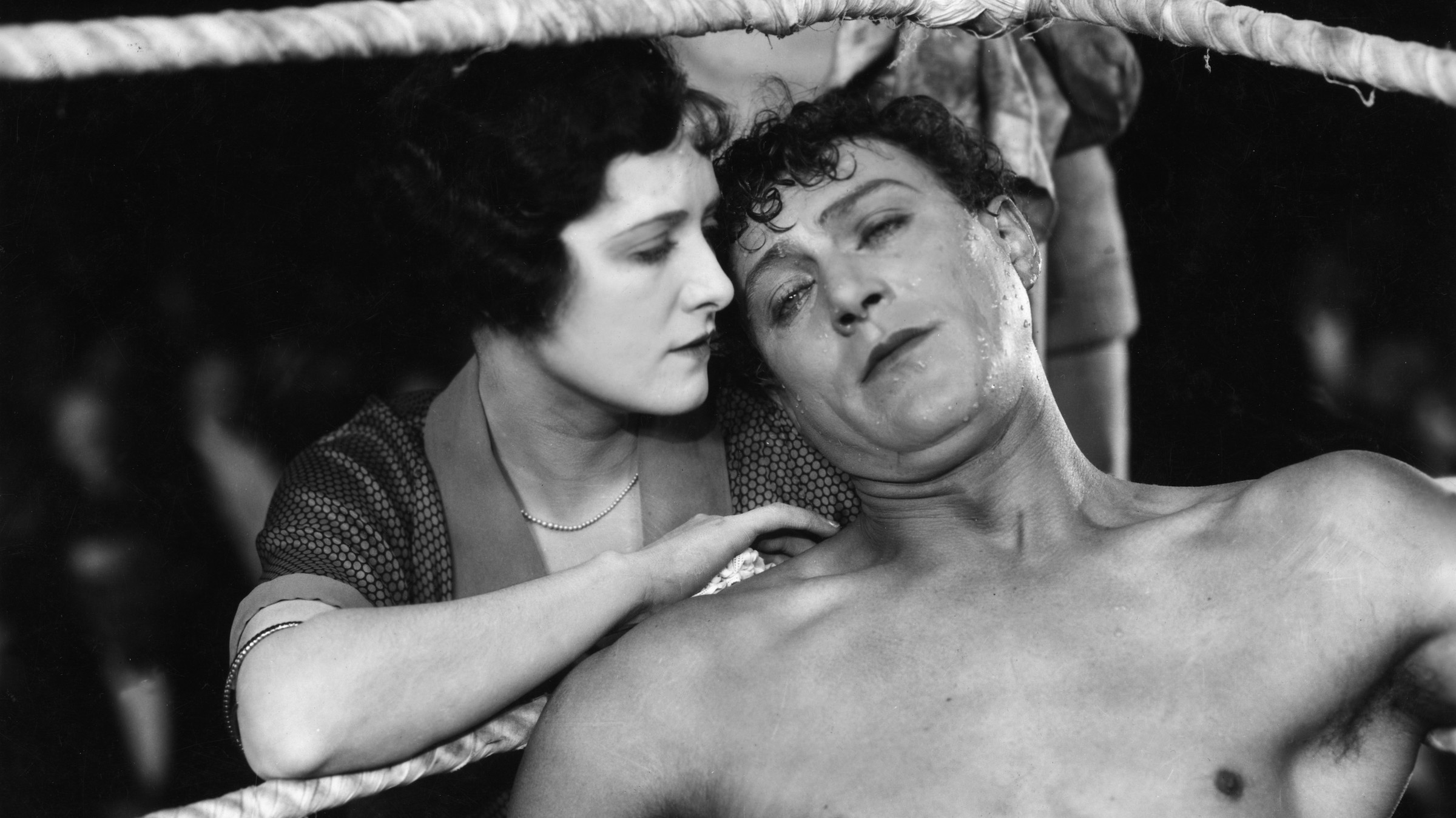The Ring was Hitchcock’s sixth film as a director and his first at British International Pictures, and, remarkably, his third film within a year. After directing Downhill and Easy Virtue, two stage adaptations for Gainsborough, Hitchcock was frustrated and jumped at the chance to develop an idea of his own. Surprisingly, The Ring (1927) is Hitchcock’s one and only original screenplay, although he worked extensively alongside other writers throughout his career. Colleagues at the studio were impressed by the neatness of Hitchcock’s script and its writer’s grasp of structure. What’s more, writing for silent films came naturally to a director who already thought in visual terms. He was much less comfortable with dialogue, which goes some way to explain why he took no sole writing credit in any later films.
The film is a love triangle melodrama set in the world of boxing. Hitchcock was fascinated by the details of boxing, and had attended championship bouts at the Albert Hall, which appears in the film, constructed through a visual sleight of hand. The title refers not just to the boxing ring, but to the wedding ring which unites up-and-coming contender Jack ‘One Round’ Sander (Carl Brisson) and his girlfriend Mabel (Lilian Hall-Davis), and to the threat to their relationship symbolized by an arm bracelet given to Mabel by Jack’s rival Bob (Ian Hunter).
A full-scale fairground was built on the studio lot, populated by hundreds of extras, giving Hitchcock ample scope to indulge his taste for visual tricks and distortions, as he does too in the party scenes, prompting critic Jonathan Rosenbaum to describe The Ring as “the most Germanic in style” of the silent films. Hitchcock’s fondness for the fairground milieu later surfaced in Saboteur (1942) and Strangers on a Train (1951).
The film also features some fine performances, notably from the dashing Danish lead Carl Brisson and Lilian Hall-Davis, perhaps the most natural of his early heroines—and not one of the ‘Hitchcock blondes.’ Brisson had in fact been an amateur boxer, and would appear again for Hitchcock in The Manxman (1929), before leaving for America where he was under contract to Paramount. Lilian Hall-Davis brought a rare warmth and natural presence to the screen both here and in Hitchcock’s The Farmer’s Wife (1928). However she did not make a successful transition to the sound era and took her own life in 1933. The Ring marked Ian Hunter’s third appearance for Hitchcock after Downhill (1927) and Easy Virtue (1927), and he was frequently cast in his later career as a somewhat stolid leading man.
The Ring was shot by John J. ‘Jack’ Cox, who was already an experienced ‘effects’ cameraman, but was encouraged by Hitchcock to experiment with new techniques. He shot all ten of Hitchcock’s features at British International Pictures and reunited with him on The Lady Vanishes (1938), a record beaten only by Hitchcock’s lengthy collaboration with virtuoso cameraman Robert Burks.
The Ring was hailed as a “masterpiece” by the Observer and by Iris Barry in the Daily Mail as “the greatest production ever made” in England. Hitchcock himself described it to Truffaut only as a “succès d’estime.”
The Restoration
The BFI National Archive received the original nitrate negative of The Ring from the Associated British Picture Corporation in 1959. The negative was already severely unstable and a new ‘fine grain’ positive was made immediately.
The restoration team, working with Deluxe 142, scanned this element at 2K resolution, and careful grading and manual restoration work enabled the removal of many of the defects of definition, contrast and warping inherent in the fine grain (the original negative was no longer extant). The intertitles have been painstakingly reconstructed and an alphabet in the handcrafted font of the original was created by scanning all the titles.
A Rialto Pictures Release • 108 minutes • DCP
Restoration by the BFI National Archive in association with STUDIOCANAL
Principal restoration funding provided by The Hollywood Foreign Press Association and The Film Foundation
Additional funding provided by Deluxe 142 and The Mohamed S. Farsi Foundation
Presented at The Hitchcock 9 with live music by Mont Alto Motion Picture Orchestra

